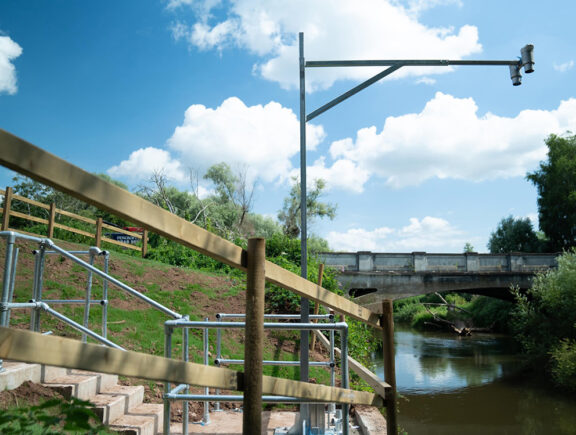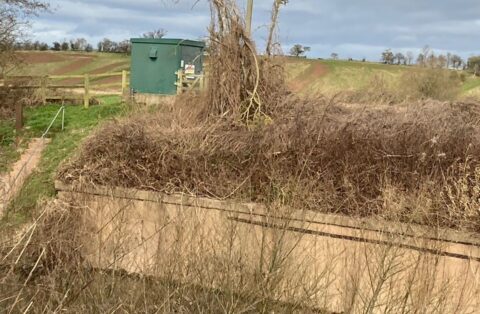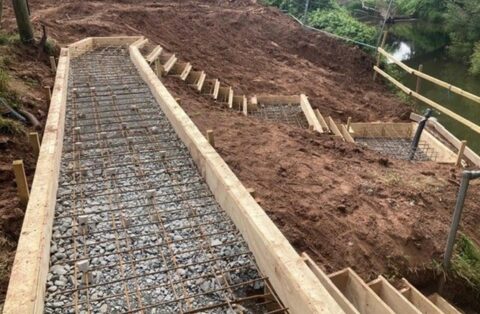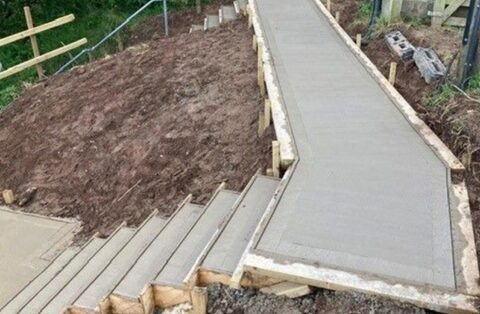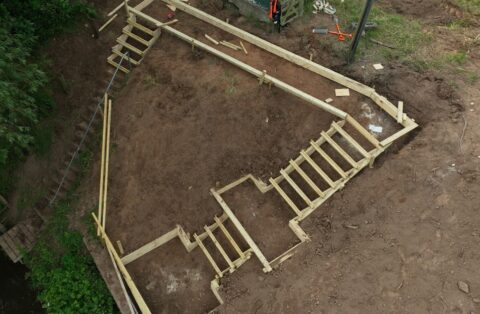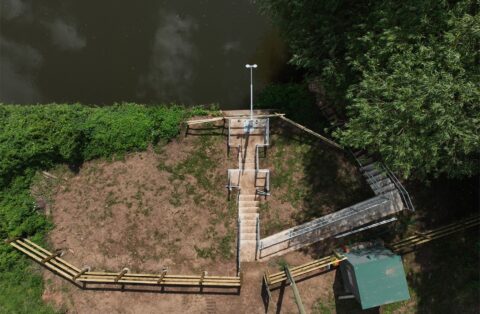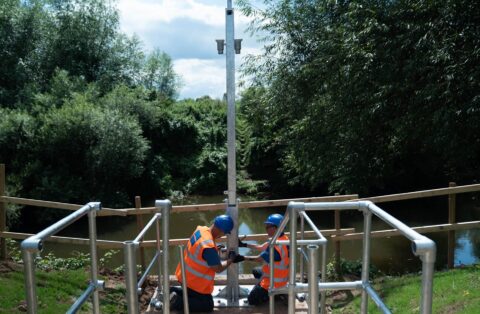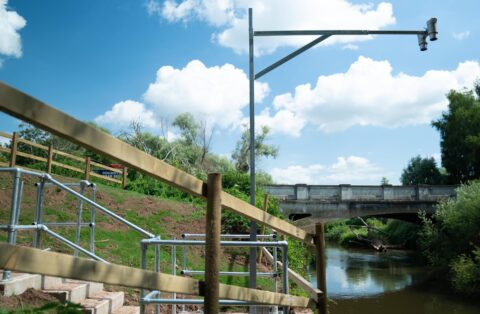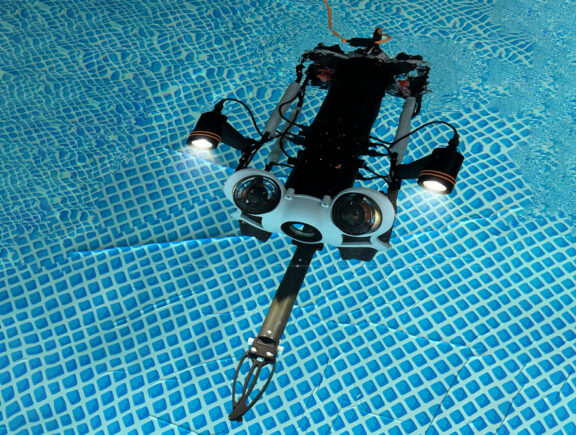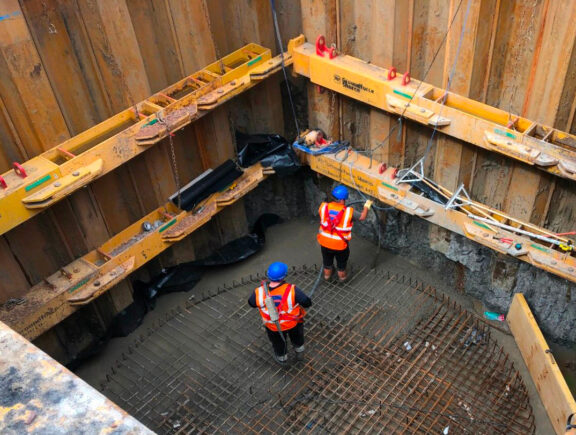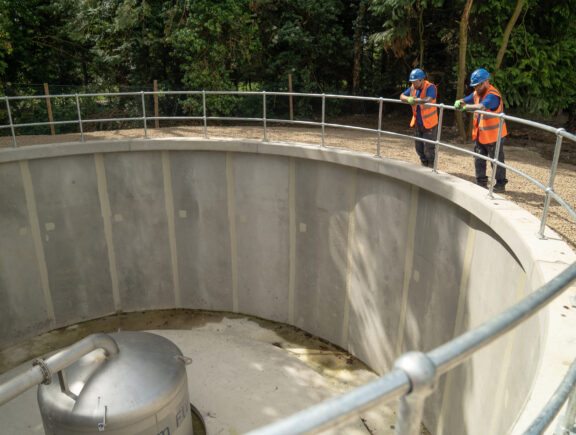Stonbury provided a topographic survey and additional dimensions for the client’s planning application. Following a successful approval, the design process incorporated a review of the radar post and access design. During this, Stonbury redesigned the access from timber-edged stairs and wooden handrailing to concrete stairs and tube clamp handrailing to help resist damage from high water levels.
While fabrication of the radar arm was completed off-site, a utilities search was undertaken to locate underground pipework prior to excavation works. Once the foundations were laid, the team excavated a seven-metre channel between the pole and control desk in which to install 100mm diameter ducting. Concrete access routes and stairs to the mounting pole were constructed and hand-railing was erected along with additional wooden fencing.
The pole, arm and made-to-measure radar brackets were installed alongside the embankment retaining wall downstream of the existing control cabinet and designed so that the pole could be lowered easily into a safe working area for maintenance.
Afterwards, a suitable entry point for the cabling was made into the side of the control kiosk, with appropriate cable protection sheathing for the above-ground sections. The communication cable was supplied by the client.
Stonbury is pleased to have delivered the programme using environmentally-conscious processes including battery powered tools and solar powered welfare vans.
